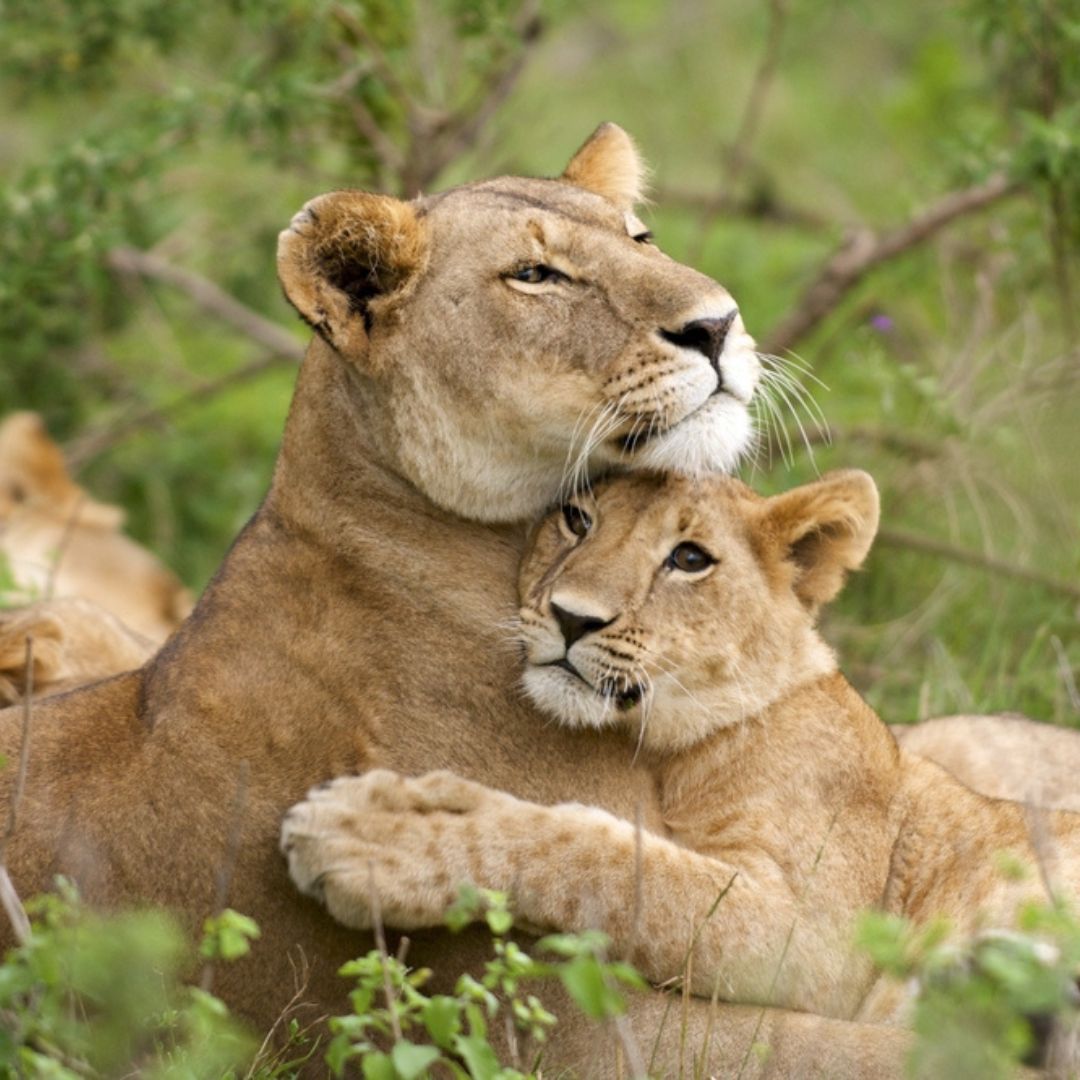Playing with lion cubs in Kenya
Lisa looked after the orphaned lion cubs at the camp, a cluster of thatched-roof huts surrounded by a high wire fence. I followed her to the mess hut that opened onto an outside kitchen with a fire pit for cooking and makeshift racks of bamboo and twigs for holding pots and pans.
We walked down a dusty path to a cluster of thatched roof dwellings. I watched Lisa approach the lion cub enclosure. She moved silently, barefooted, carrying a bucket of water. She opened the door to the cubs’ cage and I followed her in. The pen was a dusty playground of old tires for the cubs to chew on or play with and a wooden platform to climb and lounge on. As she put down the bucket, two dusty-furred cubs stopped playing and turned to look at us.

When they sauntered toward us, I bent over to pet one.
“Careful!” Lisa said. “They just look like playful little kittens. In every other way they’re already young lions.”
“Interesting. Never knew lions had spots.”
“They’re good camouflage. You don’t realize lions have enemies, but baby lions make easy lunch for baboons or hyenas.”
A frisky cub bounded toward us. He was a muscular cat, foreshadowing the strength and form of the powerful lion he would become. I petted him, a little nervous, knowing that if I startled him, I could lose a finger or two. I also realized that his playful pawing could leave gashes in my arms. When I tried to pat his head, he still had the reactions of the wild and snapped defensively.
One feisty cub rolled around in the warm dust, kicking his feet around, like the zebras I had seen on the dirt roads of Nairobi Game Park. Another cub, with scratches on his face from rough fighting, was rolling on his back, playfully pawing and snapping at his sister who growled at him from above. Since Lisa fed the cubs, they were more gentle around her. While she gave them milk from a baby bottle, they nuzzled up to her, rubbing themselves against her legs.







